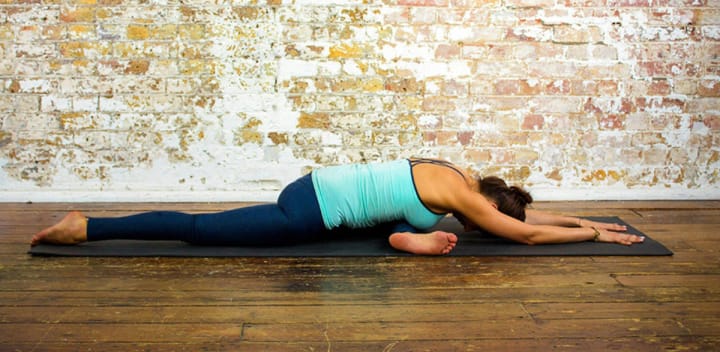Uninhibited Animal Yoga Poses
Yoga practitioners observed uninhibited animal yoga poses thousands of years ago.

Thousands of years ago yoga practitioners would observe they way animals stretched – uninhibited, free of social convention.The more flexible the body, the more flexible mind, according to ancient yoga teachings. Animal poses protect your body from muscle pain and tightness. Try to absorb the essence of each pose, imagining the stretch for its namesake and remaining present and uninhibited.
Crow Pose

Image via LCI Mag
The Crow pose strengthens your overall upper body. It also tones your abdominal organs, which assists with indigestion and lower back pains. Arm balances such as this pose are all about upper body strength. To help you develop the strength needed for crow pose, you can strengthen your arms and shoulders with vinyasas in class, but you may also want to do some upper body work outside of yoga class. Push-ups are essential, but you can also use dumbbells to work your arms. Not only will your upper body become stronger to hold yourself up in Crow, but you’ll also feel confident more baring your arms.
Camel Pose

Image via the Daily Meal
Camel pose, also known as ustrasana, opens up the hips, stretching deep hip flexors. This improves flexibility, especially in the spine. When performed correctly, nearly all the major muscles are stretched in camel pose. It also stimulates and tones many of our limbs, including the chest, abdomen, and thighs. Note that beginners should only hold this posture for about 20 seconds to avoid straining anything. Ustrasana work to improve conditions of the digestive, respiratory, endocrine, lymphatic, skeletal, and circulatory systems. This posture is recommended for people suffering from asthma, bronchitis, diabetes, thyroid and parathyroid disorders, spondylitis, and voice disorders. In Sanskrit, “ustra” means camel and “asana” means pose, hence the English name camel pose.
Turtle Pose

Image via The Ayurveda
Turtle pose, also known as kurmasana or tortoise pose, increases the flow of blood to the brain. This in turn helps with mental clarity and memory. The organs in the abdomen are stimulated during this posture. Kurmasana is an intense forward fold that shuts out sensory distractions and quiets the nervous system. Additionally, the posture soothes the nerves of the brain, and after completing it one feels refreshed, as though one had woken up from a long undisturbed sleep. The pose, however, requires a great deal of flexibility in your hips, shoulders, and back to practice the pose safely. For this reason, proceed slowly and deliberately, paying attention to your breath and alignment. Notice how you feel as you move through each preparatory pose and be prepared to stop anywhere along the way.
Downward Dog

Image via Bikini
The downward dog pose energizes the body, and is great to do with a partner. The pose is a mild inversion that calms the nervous system and helps relieve stress. It elongates and releases tension from your spine, stretches your hamstrings, calves, arches, and hands, strengthens your arms, shoulders, and back, improves mobility of your digestive system, and relieves back pain, headaches, insomnia and fatigue. It also helps relieve the symptoms of menopause.
Scorpion Pose

Image via Pinterest
Scorpion pose elevates the heart rate, and challenges balance, coordination, strength and perseverance. The Scorpion Pose or Vrischikasana is an inverted backbend pose. Designed to enhance the strength and flexibility of the practitioner, the Scorpion Yoga Pose is one of the more difficult poses to master, and it should only be attempted by advanced practitioners. When you are new to the Vrischikasana, you may find it difficult to balance your torso and legs in mid-air. Try to perform Scorpion Pose yoga next to a wall, chair, or another object that could provide support. When you swing your legs up into the air, you can support your legs against the wall. Once you are sure of your balance, slowly bend your knees until you come into the Scorpion Pose.
Fish Pose

Image via Bluezelia Yoga
The fish pose stretches your deep hip flexors and intercostals (muscles between the ribs). It also relieves tension in your neck, throat, and shoulders. The fish is the stretch that counters the Plough, and so follows them in yoga session. The name of the posture derives from the fact that if you adopt the position in water, you will float easily. When you assume this position, your chest is stretched open and your bronchial tubes are widened to promote easier breathing, greatly helping your respiratory system. In time your ribcage will expand, and this will also encourage you to breathe more deeply. By lifting your chest and tucking your arms underneath your body, you will combat postural defects such as rounded shoulders and the cervical region of your spine, thus releasing pressure on your nerves.
Pigeon Pose

Image via Yoga.com
Pigeon pose will stimulate the internal organs. It is a significant stretch for opening the buttocks, gluteal and piriformis muscles. Pigeon is actually a variation of the advanced pose, Eka Pada Rajakapotasana (One-Legged King Pigeon Pose). The two poses share similar alignment in the hips and, more important, an imperative to be approached thoughtfully and consciously. Most practitioners recognize that One-Legged King Pigeon is an advanced backbend that requires precise alignment. However, many of us are likely to be less careful with the pigeon pose, and thoughtlessly fold into the forward-bend variation of Pigeon, which can put a lot of stress on the knee and sacrum. To avoid injury, I approach Pigeon by first doing variations that will open the hips gradually and safely. Once your hips are open, you’ll be able to craft a well-balanced Pigeon that benefits your hips and lower back. If you practice it consistently, you’ll notice more ease in your lower half as you sit, walk, and stand.
Firefly Pose

Image via Yoga Anonymous
Firefly pose stretches the inner groins and back torso and opens up the hips. Firefly is a deceivingly challenging arm balance. It looks simple enough, but there are many active parts of this pose. It requires a lot of wrist, arm and core strength. However, even if you have not mastered your upper body strength, you can still practice this challenging posture. This is an arm balancing posture that incorporates the legs flexibility with core strength. When the lower body is raised from the mat, the pose strengthens the shoulders and wrists further.
Cat-Cow Pose

Image via Yoga Outlet
The cat-cow pose creates emotional balance and provides a gentle massage to the spine and belly organs. The cat-cow stretch is a yoga classic, and with good reason. It consists of moving the spine from a rounded position (flexion) to an arched one (extension). It’s a simple motion, but one that is enormously beneficial in preventing back pain and maintaing a healthy spine. Each movement is done in conjunction with either an inhalation or exhalation of the breath, making this a simple vinyasa.
About the Creator
Izzy Erlich
Upstate New Yorker, who loves to travel to Colorado and Vancouver. Certified Yoga instructor.






Comments
There are no comments for this story
Be the first to respond and start the conversation.